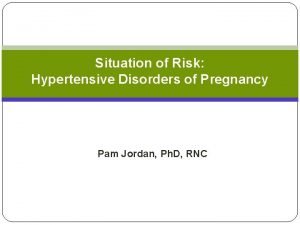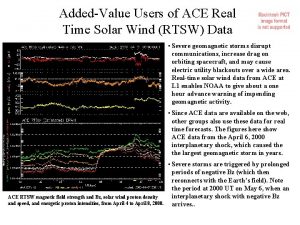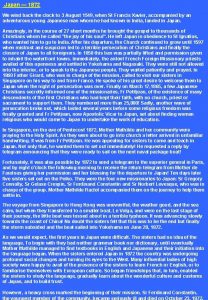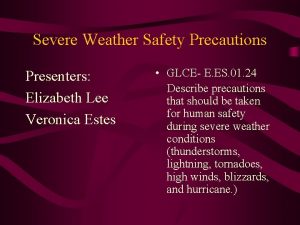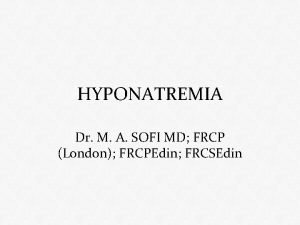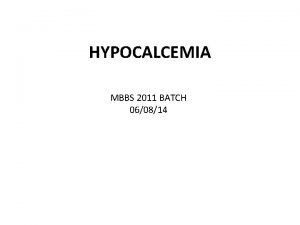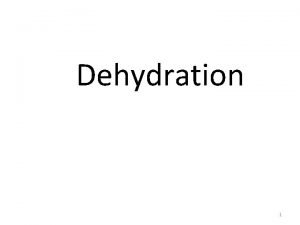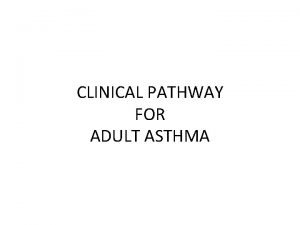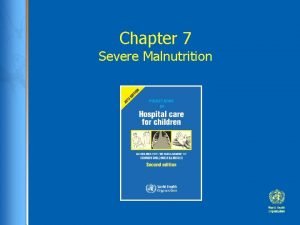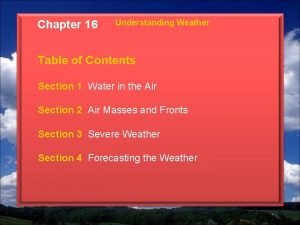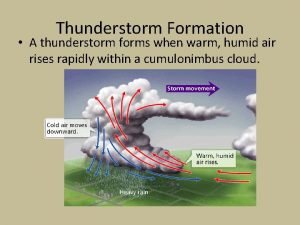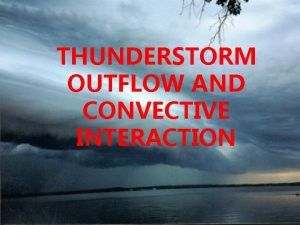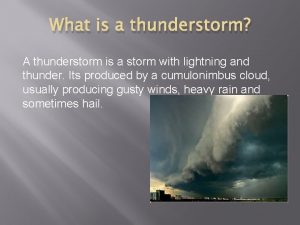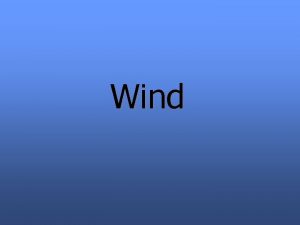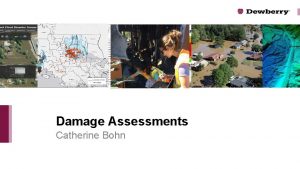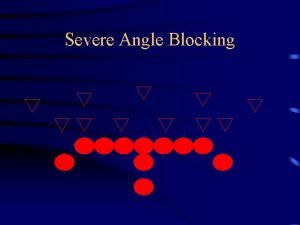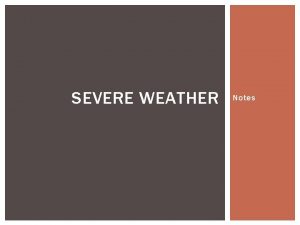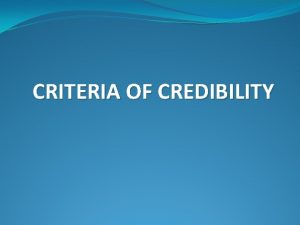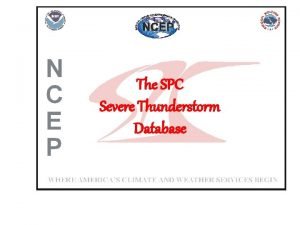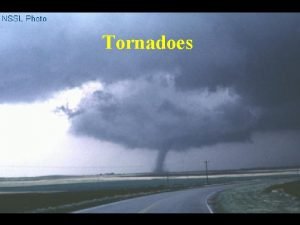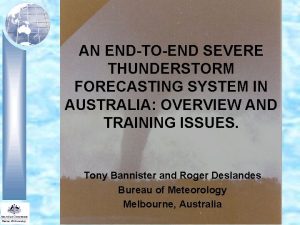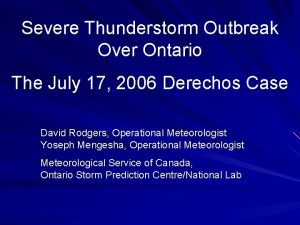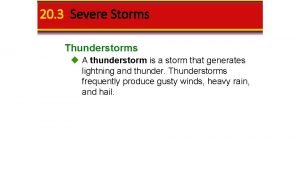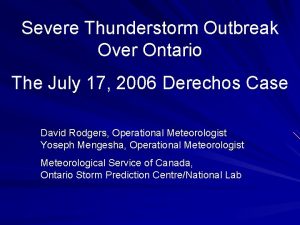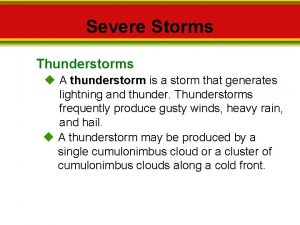Severe Thunderstorm Wind Damage Criteria Is it time

















- Slides: 17

Severe Thunderstorm Wind Damage Criteria – Is it time for a change? Joe Villani WFO Albany, NY Northeast Regional Operational Workshop November 2 -3, 2016

Motivation • Using downed trees primary method of verifying severe thunderstorm wind damage in the eastern U. S. • Official issuance criteria for a Severe Thunderstorm Warning does not match NWS mission (from NWSI 10 -511):

Motivation • Issuance criteria inconsistent with NWS mission since damage from T-storm winds (downed trees or tree limbs) can occur with winds < 58 mph • 70 of 73 missed reports in 2016 (ALY) due to downed tree(s) or wires • Present evidence and basis for needed change of issuance criteria…

History Lesson • From Washington Post (Capital Weather Gang) article – July 9, 2014: Legacy criteria for wind damage based on aviation from 1970!

Food for Thought • Does the 58 mph issuance criteria for wind damage best serve our NWS customers in 2016? • Fact: Tree damage can and does occur with wind speeds < 58 mph! • Condition of tree(s) a factor: • From NWSI 10 -1605:

Rationale for Change • At ALY, in 2016, 70 of 73 missed (or unwarned) reports were from tree(s) or wires down • Equates to 96% of missed reports! • Over the past 5 years, 220 of 242 missed reports were tree(s) or wires down • 91% of missed reports from 2012 -2016! • Receiving more reports than 5+ years ago…Social Media

Rationale for Change • NWS Meteorologists currently look for radar signatures that indicate wind around or > 50 kt • For example: • strong reflectivity gradients on leading edge of lines/bows • “wall of wind” signatures in base velocity data • However, most storms that produce damage to weakened/rotted trees occur with subtle signatures

Severe Radar Signatures Examples for Wind 60 -70 kt “Wall of wind” from 0. 5° base velocity Strong reflectivity gradient on leading edge

Background Information • Frelich and Ostuno (2012) found damage can occur in healthy trees at 55 -60 mph, but unhealthy trees (diseased, rotting, not planted properly) can be damaged with lower wind speeds Example of tree planted too deep Example of rotted trunk

Background Information • Case study from Frelich and Ostuno (2012): July 4, 2003 Grand Rapids, MI • A dozen trees or large tree limbs downed by 45 -55 mph winds • Storm survey revealed all but one tree was rotted/diseased

Background Information • Even occurrences such as drought can have an effect on the health of trees and can increase their susceptibility of falling

Scientific Basis for Change • From Enhanced Fujita Scale Report (Mc. Donald and Mehta 2006): • Lower bound for tree limb damage found to be 48 mph

Scientific Basis for Change • From Enhanced Fujita Scale Report (Mc. Donald and Mehta 2006): • Lower bound for tree limb damage found to be 48 mph

Proposed Change • Impossible to account for condition of trees when issuing warnings • Change the issuance criteria for Severe Thunderstorm wind damage to: • wind gusts >= 48 mph or producing damage to trees including downed limbs • 48 mph threshold = lower bound of tree limbs broken in Enhanced Fujita Scale

Proposed Change • For the more intense or high-end storms producing wind damage, use thresholds provided in Warn. Gen warning template: • Wind speeds > 60 mph, > 70 mph, > 80 mph, etc. • NWS moving towards impact-based warnings: • Puts focus on impact of wind, such as trees or tree limbs damaging houses/cars, power outages, etc.

Acknowledgements/References • Acknowledgements: Neil Stuart, Brian Frugis (ALY) • References: • NWS Directives • http: //www. nws. noaa. gov/directives/ • Frelich, L. E. , and E. J. Ostuno, 2012: Estimating wind speeds of convective storms from tree damage. Electronic J. Severe Storms Meteor. , 7 (9), 1– 19. • Mc. Donald, J. and K. C. Mehta, 2006: A Recommendation for an Enhanced Fujita Scale (EFScale), Revision 2. Wind Science and Engineering Research Center, Texas Tech University, Lubbock, TX, 111 pp.

Hopefully the discussion continues… • Goal: Get people talking about this issue and discuss potential solutions! • Contact info: Joe. Villani@noaa. gov • Questions/Comments?
 Magnesium sulfate toxicity level
Magnesium sulfate toxicity level Severe dka criteria
Severe dka criteria Kurshalter
Kurshalter Start time end time and elapsed time
Start time end time and elapsed time Ace real time solar wind
Ace real time solar wind Japan volga bus
Japan volga bus Whmis 2015 quiz answers
Whmis 2015 quiz answers Chapter 20 weather patterns and severe storms
Chapter 20 weather patterns and severe storms Severe weather safety precautions worksheet
Severe weather safety precautions worksheet Katrine zhiroff
Katrine zhiroff Severe hyponatremia treatment
Severe hyponatremia treatment Severe hypocalcemia
Severe hypocalcemia Trousseau sign
Trousseau sign Mild moderate severe dehydration
Mild moderate severe dehydration Mild moderate severe dehydration
Mild moderate severe dehydration Mild moderate severe asthma exacerbation
Mild moderate severe asthma exacerbation Malnutrition case presentation
Malnutrition case presentation Chapter 16 section 1 water in the air answer key
Chapter 16 section 1 water in the air answer key
